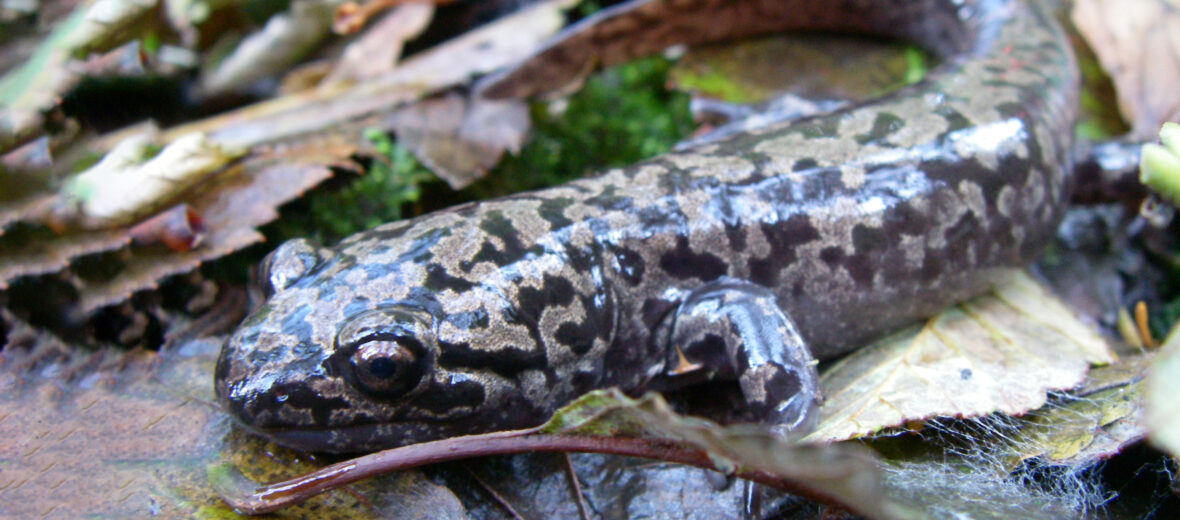
The coastal giant salamander can be found in the Pacific Northwest. These are the largest known salamander in North America. There are 3 known related species in the same family: the California giant salamander, Cope’s giant salamander, and the Idaho giant salamander. These sallies can be found in the U.S. states of California, Oregon, and Washington; as well as in British Columbia, Canada. They may face the threats of habitat loss and destruction at the hands of the logging industry; pollution at the hands of the agricultural industry; and climate change, which brings about temperature fluctuations and habitat altering weather, but these critters have a stable population throughout their range and are thus listed as Least Concern by the IUCN.
First the Stats…
Scientific name: Dicamptodon tenebrosus
Weight: Up to 4.02 ounces
Length: Up to 13 inches
Lifespan: Up to 25 years
Now on to the Facts!
1.) Their limbs are heavy and thick. The forelimbs sport 4 toes, while their hind limbs have 5 toes.
2.) The tail of these critters measures up to 40% of their total length.
3.) These salamanders are predominantly fossorial (spend all or most of their life underground). They emerge to eat and reproduce.
4.) They are nocturnal (active at night).
5.) While in the larval stage, they will feast on small macroinvertebrates like insect larvae as well as small fish, and mollusks, and slugs. Adults prey on insects, worms, various invertebrates, small vertebrates like juvenile rodents, snakes, and other giant salamanders. Cannibalism frequently occurs.
But wait, there’s more on the coastal giant salamander!
6.) Coastal giant salamanders excrete toxins through their skin which causes nausea if consumed. Their bite also packs a punch as it’s very painful.
7.) Females lay their eggs in slow to medium flow streams.
Did you know…?
These are among the few known species to possess the ability to vocalize.
8.) These salamanders undergo 2 distinct life stages: the aquatic larval stage with filamentous gills and an elongated tail with a caudal fin, and a terrestrial adult form losing their caudal fin and gills, instead developing strong legs and a pair of internal lungs.
9.) Neoteny is commonly found in this species in British Columbia. This is where they will remain in the water their whole life, like an axolotl.
10.) In their aquatic form, they are found in clear, cool, or cold, well-oxygenated streams and creeks, and occasionally in mountain lakes and ponds. Adults who have metamorphosed to live on land are found in humid forests underneath rocks, logs, etc., near mountain streams, or along rocky shores of mountain lakes.
But wait, there’s still more on the coastal giant salamander!
11.) Under the Wildlife Act in British Columbia, these critters are protected from being collected or killed.
12.) It is not known if these salamanders are effected by the Batrachochytrium salamandrivorans (Bsal) fungus.
Now a Short Coastal Giant Salamander Video!
This video talks about the California giant salamander.
Be sure to share & comment below! Also, check out the Critter Science YouTube channel. Videos added regularly!
Want to suggest a critter for me to write about? Let me know here.
Some source material acquired from: Wikipedia & IUCN
Photo credit: Jeffrey Marsten



